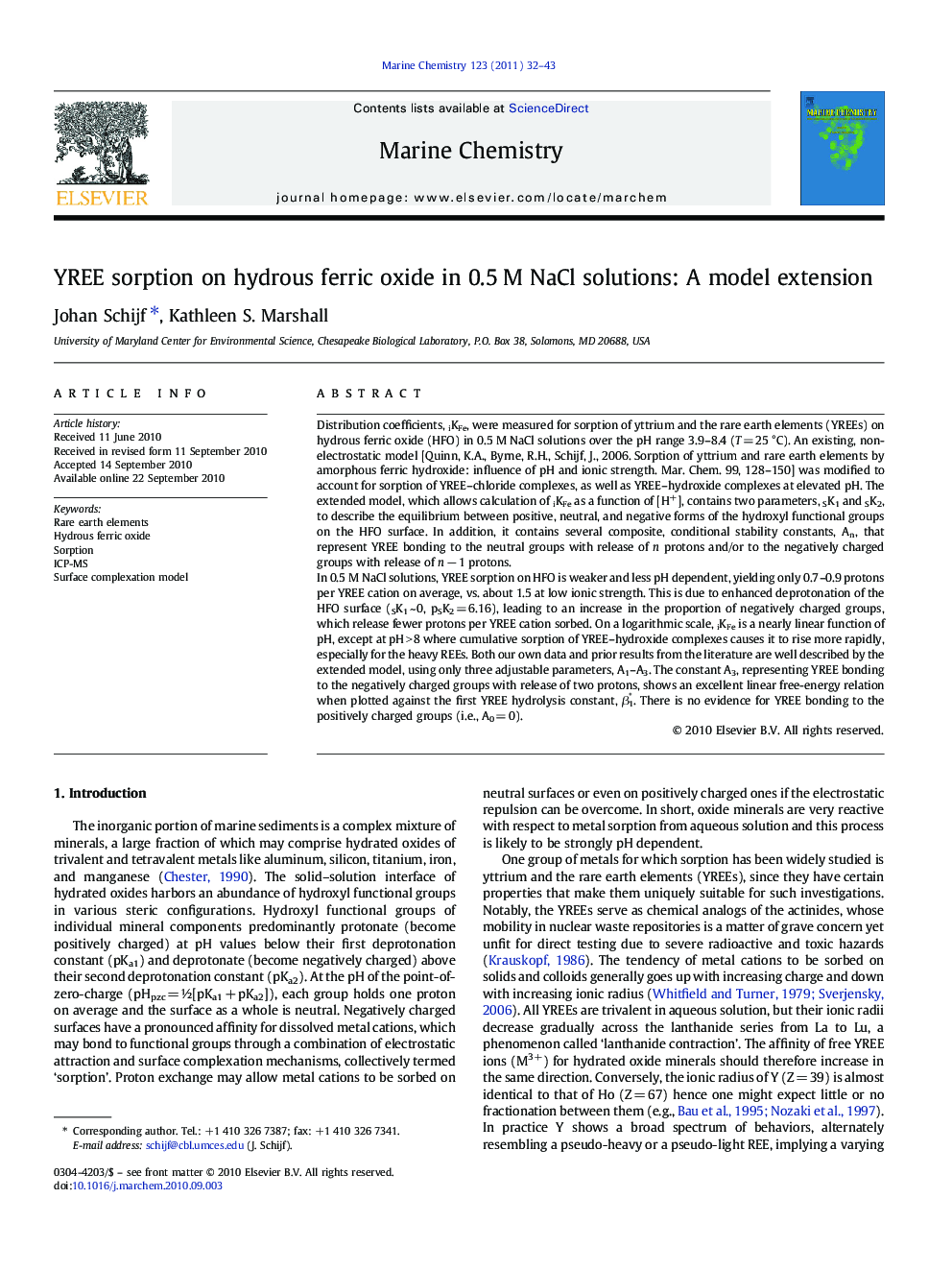| Article ID | Journal | Published Year | Pages | File Type |
|---|---|---|---|---|
| 1263081 | Marine Chemistry | 2011 | 12 Pages |
Distribution coefficients, iKFe, were measured for sorption of yttrium and the rare earth elements (YREEs) on hydrous ferric oxide (HFO) in 0.5 M NaCl solutions over the pH range 3.9–8.4 (T = 25 °C). An existing, non-electrostatic model [Quinn, K.A., Byrne, R.H., Schijf, J., 2006. Sorption of yttrium and rare earth elements by amorphous ferric hydroxide: influence of pH and ionic strength. Mar. Chem. 99, 128–150] was modified to account for sorption of YREE–chloride complexes, as well as YREE–hydroxide complexes at elevated pH. The extended model, which allows calculation of iKFe as a function of [H+], contains two parameters, SK1 and SK2, to describe the equilibrium between positive, neutral, and negative forms of the hydroxyl functional groups on the HFO surface. In addition, it contains several composite, conditional stability constants, An, that represent YREE bonding to the neutral groups with release of n protons and/or to the negatively charged groups with release of n − 1 protons.In 0.5 M NaCl solutions, YREE sorption on HFO is weaker and less pH dependent, yielding only 0.7–0.9 protons per YREE cation on average, vs. about 1.5 at low ionic strength. This is due to enhanced deprotonation of the HFO surface (SK1 ~ 0, pSK2 = 6.16), leading to an increase in the proportion of negatively charged groups, which release fewer protons per YREE cation sorbed. On a logarithmic scale, iKFe is a nearly linear function of pH, except at pH > 8 where cumulative sorption of YREE–hydroxide complexes causes it to rise more rapidly, especially for the heavy REEs. Both our own data and prior results from the literature are well described by the extended model, using only three adjustable parameters, A1–A3. The constant A3, representing YREE bonding to the negatively charged groups with release of two protons, shows an excellent linear free-energy relation when plotted against the first YREE hydrolysis constant, β1*. There is no evidence for YREE bonding to the positively charged groups (i.e., A0 = 0).
